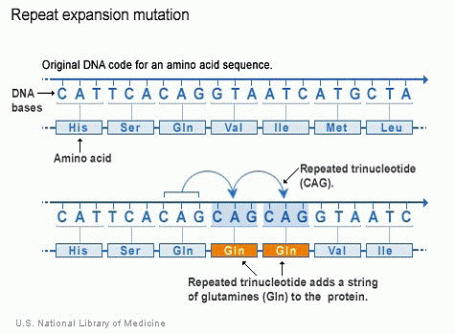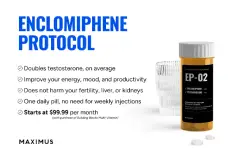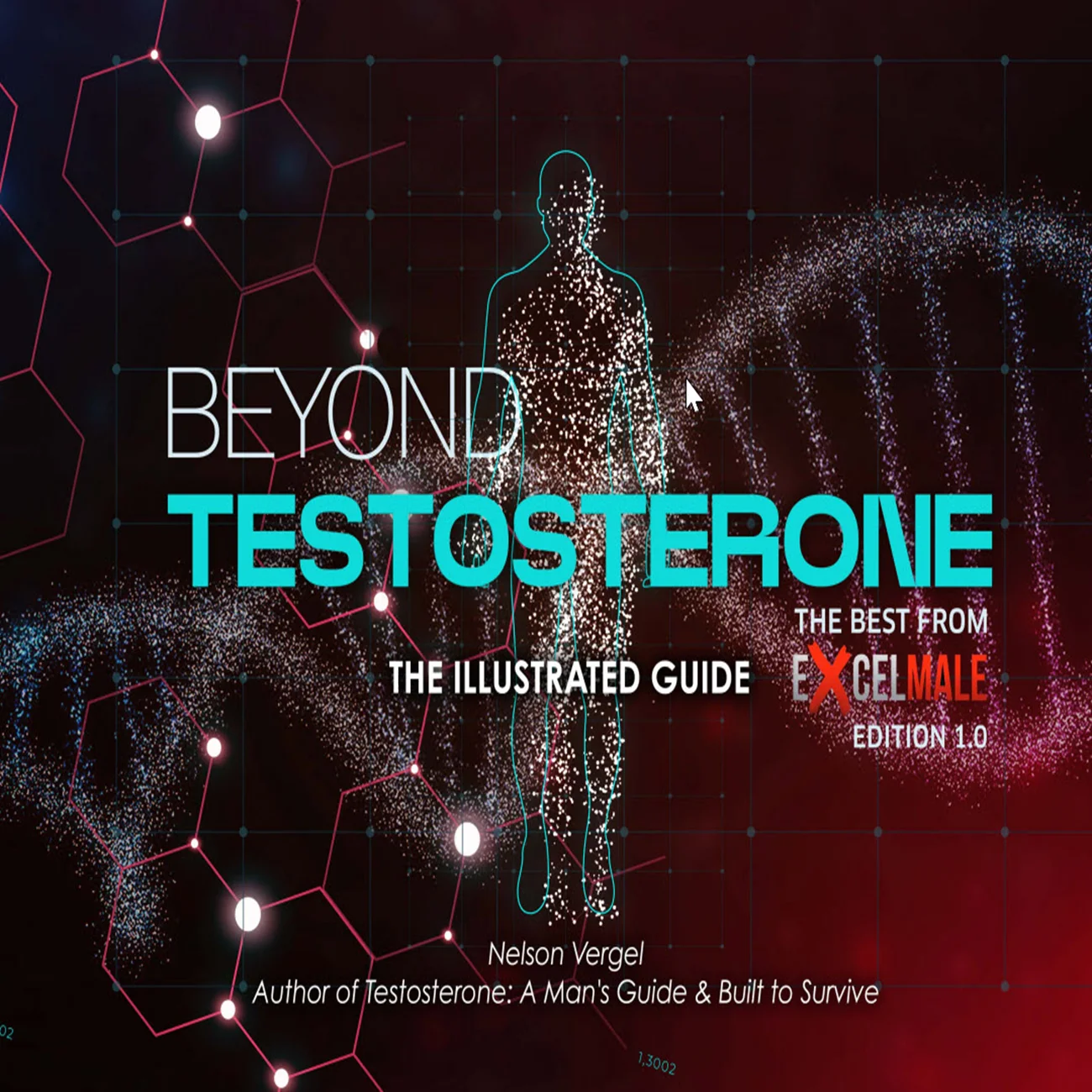The Genetic Secret to Unlocking Testosterone's True Power
The TRT Paradox: High Testosterone, Low Results?
For countless men, the journey into Testosterone Replacement Therapy (TRT) begins with the promise of renewed energy, sharper focus, increased muscle mass, and a revitalized sex drive. Yet, many find themselves in a frustrating and confusing situation: their lab reports show normal or even high testosterone levels, but the promised benefits never materialize. This is the TRT Paradox—a widespread but poorly understood issue in men's health where the numbers on a lab test don't match the reality of how a man feels and performs.
The core of the problem, as highlighted in recent research, is that men with identical serum testosterone levels can exhibit vastly different symptoms and responses to therapy. This isn't just a clinical observation; it's a lived experience for many, perfectly captured by one man's struggle:
"As I seem to barely respond at all to Testosterone - I have been on TRT for 5 years, and find it hard to tell the difference between 'on' and 'off' at any measure... this potentially explains a lot."
This experience gets to the heart of a fundamental question that has puzzled both patients and physicians. If the issue isn't the amount of testosterone in the blood, what is the missing piece of the puzzle? What if the answer isn't in your testosterone levels, but in your DNA?
The Missing Link: Your Androgen Receptor's CAG Repeats
The key to understanding testosterone's effectiveness lies in a simple but profound biological concept: it's not just about the hormone, but about the body's ability to use it. Think of testosterone as a key and the Androgen Receptor (AR) as the lock. For the key to work, it must fit the lock perfectly. Your Androgen Receptors, present in cells throughout your body—in your nervous system, prostate, muscles, and more—are the gateways through which testosterone exerts its powerful effects. Crucially, the design of this lock is determined by your genetics.
Within the gene that codes for your Androgen Receptor, there is a specific sequence of three DNA "letters"—Cytosine (C), Adenine (A), and Guanine (G)—that repeats itself multiple times. These are known as CAG repeats, and the exact number of these repeats varies from person to person. This small genetic variation has a massive impact on how your body responds to testosterone.
The relationship is one of the most critical concepts in modern men's health: there is an inverse correlation between the number of CAG repeats you have and your body's sensitivity to androgens like testosterone.
• Fewer CAG Repeats (<22): This correlates with higher sensitivity to testosterone. Your body makes the most of the testosterone it has because the receptor protein undergoes fewer conformational changes, creating a more stable and powerful bond with testosterone and leading to a more robust biological response.
• More CAG Repeats (>23): This correlates with lower sensitivity to testosterone. Your androgen receptors are less efficient. With more repeats, the relationship between androgens and the receptor becomes weaker, meaning you might need higher levels of testosterone to achieve the same effects as someone with fewer repeats.
This genetic variance is the missing link that explains the TRT Paradox. It's why two men can have the same testosterone level but experience completely different outcomes, and it has profound implications for a man's health and well-being throughout his entire life.
3.0 Beyond TRT: How Your Genes Influence Every Aspect of Your Manhood
The impact of your CAG repeat length extends far beyond your response to hormone therapy. Because testosterone influences nearly every organ and system in the male body, your innate androgen sensitivity is a fundamental factor that shapes your health from embryonic development to old age. This single genetic marker can influence physical traits, disease risk, and even psychological tendencies.
Here are some of the key areas where your AR gene polymorphism plays a decisive role:
• Sexual Function: Studies show a direct link between CAG repeat length and the effectiveness of TRT for sexual health. A shorter CAG repeat length is associated with a significantly better recovery of erectile function, sexual desire, and overall satisfaction when on testosterone therapy.
• Prostate Health: Your genetic sensitivity is a double-edged sword for the prostate. Fewer repeats are linked to an increased risk for Benign Prostatic Hyperplasia (BPH) and prostate cancer, with studies showing that men with fewer than 20 repeats have a 1.92 times higher chance of developing BPH requiring surgery. Conversely, more repeats appear to offer a protective effect.
• Fertility: A well-established link exists between a higher number of CAG repeats and male fertility disorders like oligozoospermia (low sperm count). This is seen in its most severe form in men with Kennedy's disease, a rare hereditary condition where CAG repeats can exceed 36, leading to profound infertility alongside neurological symptoms.
• Metabolic Health: AR sensitivity influences body composition and metabolism. A small number of repeats is associated with protective factors like lower fat mass and plasma insulin levels. However, it is also linked to some undesirable factors, such as lower levels of HDL ("good" cholesterol).
• Mental & Psychological State: The effects are not just physical. Research has shown that a longer CAG repeat length is an independent risk factor for anxiety, depression, and panic disorders, regardless of a man's endogenous testosterone levels. This suggests that low androgen receptor activity can directly impact mood and psychological resilience.
• Physical & Cognitive Traits: The influence of AR sensitivity begins early in life. Surprising findings have linked short CAG repeats to intellectual giftedness in boys. In men with Klinefelter syndrome, this genetic variation can influence everything from bone density and the development of gynecomastia to surprisingly personal outcomes like the likelihood of forming stable partner relationships and pursuing professions requiring a higher level of education.
Understanding your genetic predisposition is not just about fine-tuning TRT; it's about gaining a deeper insight into the biological blueprint of your entire life. So, how can you use this cutting-edge science to your advantage?
4.0 The Future of Men's Health: Personalizing Your Protocol
The study of CAG repeats is not a niche curiosity; it represents the next major step forward in personalized medicine for men. For decades, hormone therapy has operated on a largely one-size-fits-all model based on blood serum levels. Armed with this genetic information, clinicians can finally move beyond population averages and begin tailoring treatments to an individual's unique biology.
The direct clinical implications for TRT dosage are clear and represent a paradigm shift in how therapy should be approached.
• Men with a low number of CAG repeats: Due to their high receptor sensitivity, these men may achieve excellent clinical results with lower doses of testosterone. This could also mean a lower risk of side effects associated with unnecessarily high dosages.
• Men with a high number of CAG repeats: These men may require higher doses of testosterone to overcome their lower receptor sensitivity and achieve the desired therapeutic benefits. For them, a "normal" dose may be functionally insufficient.
While the determination of CAG polymorphism is not yet recommended for routine clinical practice, it is available through specialized genetic labs with a physician's order. This personalized approach is the key to finally solving the TRT paradox—and in the full video, we'll show you exactly how to explore it.
5.0 What You'll Discover in the Full Video
Click "play" to unlock the full story behind your body's response to testosterone. In this comprehensive video, you will learn:
1. A Deep Dive into the Science: Uncover exactly how the Androgen Receptor gene works and why this single genetic marker has such a massive and wide-ranging impact on a man's life.
2. Are You High or Low?: Explore the average CAG repeat numbers for different global populations—including European (21), African (17), and Asian (23)—and understand what the "normal" range is.
3. Testing Options Explained: Learn about the types of genetic tests available, their approximate cost (around $990), and how you can have an informed discussion with your doctor about getting tested.
4. Actionable Steps: Discover how to interpret your potential results and what they mean for optimizing your health, energy, and vitality—whether you are currently on TRT or not.
Androgen Receptor Gene CAG Repeat Polymorphism Independently Influences Recovery of Male Sexual Function After Testosterone Replacement Therapy in Postsurgical Hypogonadotropic Hypogonadism
Tirabassi G, delli Muti N, Corona G, Maggi M, Balercia G. Androgen Receptor Gene CAG Repeat Polymorphism Independently Influences Recovery of Male Sexual Function After Testosterone Replacement Therapy in Postsurgical Hypogonadotropic Hypogonadism. The Journal of Sexual Medicine. http://onlinelibrary.wiley.com/doi/10.1111/jsm.12493/abstract
Introduction Few and contradictory studies have evaluated the possible influence of androgen receptor (AR) gene CAG repeat polymorphism on male sexual function.

Aim In this study we evaluated the role of AR gene CAG repeat polymorphism in the recovery of sexual function after testosterone replacement therapy (TRT) in men affected by postsurgical hypogonadotropic hypogonadism, a condition which is often associated with hypopituitarism and in which the sexual benefits of TRT must be distinguished from those of pituitary-function replacement therapies.
Methods Fifteen men affected by postsurgical hypogonadotropic hypogonadism were retrospectively assessed before and after TRT.
Main Outcome Measures Main outcome measures included sexual parameters as assessed by the International Index of Erectile Function questionnaire, levels of pituitary dependent hormones (total testosterone, free T3, free T4, cortisol, insulin-like growth factor-1 [IGF-1], prolactin), and results of genetic analysis (AR gene CAG repeat number).
Results Plasma concentrations of free T3, free T4, cortisol, and prolactin did not vary significantly between the two phases, while testosterone and IGF-1 increased significantly after TRT. A significant improvement in all sexual parameters studied was found.
The number of CAG triplets was negatively and significantly correlated with changes in all the sexual parameters, while opposite correlations were found between changes in sexual parameters and changes in testosterone levels; no correlation of change in IGF1 with change in sexual parameters was reported.
On multiple linear regression analysis, after correction for changes in testosterone, nearly all the associations between the number of CAG triplets and changes in sexual parameters were confirmed.
Conclusions Shorter length AR gene CAG repeat number is associated with the recovery of sexual function after TRT in postsurgical male hypogonadotropic hypogonadism, independently of the effects of concomitant pituitary-replacement therapies.
The TRT Paradox: High Testosterone, Low Results?
For countless men, the journey into Testosterone Replacement Therapy (TRT) begins with the promise of renewed energy, sharper focus, increased muscle mass, and a revitalized sex drive. Yet, many find themselves in a frustrating and confusing situation: their lab reports show normal or even high testosterone levels, but the promised benefits never materialize. This is the TRT Paradox—a widespread but poorly understood issue in men's health where the numbers on a lab test don't match the reality of how a man feels and performs.
The core of the problem, as highlighted in recent research, is that men with identical serum testosterone levels can exhibit vastly different symptoms and responses to therapy. This isn't just a clinical observation; it's a lived experience for many, perfectly captured by one man's struggle:
"As I seem to barely respond at all to Testosterone - I have been on TRT for 5 years, and find it hard to tell the difference between 'on' and 'off' at any measure... this potentially explains a lot."
This experience gets to the heart of a fundamental question that has puzzled both patients and physicians. If the issue isn't the amount of testosterone in the blood, what is the missing piece of the puzzle? What if the answer isn't in your testosterone levels, but in your DNA?
The Missing Link: Your Androgen Receptor's CAG Repeats
The key to understanding testosterone's effectiveness lies in a simple but profound biological concept: it's not just about the hormone, but about the body's ability to use it. Think of testosterone as a key and the Androgen Receptor (AR) as the lock. For the key to work, it must fit the lock perfectly. Your Androgen Receptors, present in cells throughout your body—in your nervous system, prostate, muscles, and more—are the gateways through which testosterone exerts its powerful effects. Crucially, the design of this lock is determined by your genetics.
Within the gene that codes for your Androgen Receptor, there is a specific sequence of three DNA "letters"—Cytosine (C), Adenine (A), and Guanine (G)—that repeats itself multiple times. These are known as CAG repeats, and the exact number of these repeats varies from person to person. This small genetic variation has a massive impact on how your body responds to testosterone.
The relationship is one of the most critical concepts in modern men's health: there is an inverse correlation between the number of CAG repeats you have and your body's sensitivity to androgens like testosterone.
• Fewer CAG Repeats (<22): This correlates with higher sensitivity to testosterone. Your body makes the most of the testosterone it has because the receptor protein undergoes fewer conformational changes, creating a more stable and powerful bond with testosterone and leading to a more robust biological response.
• More CAG Repeats (>23): This correlates with lower sensitivity to testosterone. Your androgen receptors are less efficient. With more repeats, the relationship between androgens and the receptor becomes weaker, meaning you might need higher levels of testosterone to achieve the same effects as someone with fewer repeats.
This genetic variance is the missing link that explains the TRT Paradox. It's why two men can have the same testosterone level but experience completely different outcomes, and it has profound implications for a man's health and well-being throughout his entire life.
3.0 Beyond TRT: How Your Genes Influence Every Aspect of Your Manhood
The impact of your CAG repeat length extends far beyond your response to hormone therapy. Because testosterone influences nearly every organ and system in the male body, your innate androgen sensitivity is a fundamental factor that shapes your health from embryonic development to old age. This single genetic marker can influence physical traits, disease risk, and even psychological tendencies.
Here are some of the key areas where your AR gene polymorphism plays a decisive role:
• Sexual Function: Studies show a direct link between CAG repeat length and the effectiveness of TRT for sexual health. A shorter CAG repeat length is associated with a significantly better recovery of erectile function, sexual desire, and overall satisfaction when on testosterone therapy.
• Prostate Health: Your genetic sensitivity is a double-edged sword for the prostate. Fewer repeats are linked to an increased risk for Benign Prostatic Hyperplasia (BPH) and prostate cancer, with studies showing that men with fewer than 20 repeats have a 1.92 times higher chance of developing BPH requiring surgery. Conversely, more repeats appear to offer a protective effect.
• Fertility: A well-established link exists between a higher number of CAG repeats and male fertility disorders like oligozoospermia (low sperm count). This is seen in its most severe form in men with Kennedy's disease, a rare hereditary condition where CAG repeats can exceed 36, leading to profound infertility alongside neurological symptoms.
• Metabolic Health: AR sensitivity influences body composition and metabolism. A small number of repeats is associated with protective factors like lower fat mass and plasma insulin levels. However, it is also linked to some undesirable factors, such as lower levels of HDL ("good" cholesterol).
• Mental & Psychological State: The effects are not just physical. Research has shown that a longer CAG repeat length is an independent risk factor for anxiety, depression, and panic disorders, regardless of a man's endogenous testosterone levels. This suggests that low androgen receptor activity can directly impact mood and psychological resilience.
• Physical & Cognitive Traits: The influence of AR sensitivity begins early in life. Surprising findings have linked short CAG repeats to intellectual giftedness in boys. In men with Klinefelter syndrome, this genetic variation can influence everything from bone density and the development of gynecomastia to surprisingly personal outcomes like the likelihood of forming stable partner relationships and pursuing professions requiring a higher level of education.
Understanding your genetic predisposition is not just about fine-tuning TRT; it's about gaining a deeper insight into the biological blueprint of your entire life. So, how can you use this cutting-edge science to your advantage?
4.0 The Future of Men's Health: Personalizing Your Protocol
The study of CAG repeats is not a niche curiosity; it represents the next major step forward in personalized medicine for men. For decades, hormone therapy has operated on a largely one-size-fits-all model based on blood serum levels. Armed with this genetic information, clinicians can finally move beyond population averages and begin tailoring treatments to an individual's unique biology.
The direct clinical implications for TRT dosage are clear and represent a paradigm shift in how therapy should be approached.
• Men with a low number of CAG repeats: Due to their high receptor sensitivity, these men may achieve excellent clinical results with lower doses of testosterone. This could also mean a lower risk of side effects associated with unnecessarily high dosages.
• Men with a high number of CAG repeats: These men may require higher doses of testosterone to overcome their lower receptor sensitivity and achieve the desired therapeutic benefits. For them, a "normal" dose may be functionally insufficient.
While the determination of CAG polymorphism is not yet recommended for routine clinical practice, it is available through specialized genetic labs with a physician's order. This personalized approach is the key to finally solving the TRT paradox—and in the full video, we'll show you exactly how to explore it.
5.0 What You'll Discover in the Full Video
Click "play" to unlock the full story behind your body's response to testosterone. In this comprehensive video, you will learn:
1. A Deep Dive into the Science: Uncover exactly how the Androgen Receptor gene works and why this single genetic marker has such a massive and wide-ranging impact on a man's life.
2. Are You High or Low?: Explore the average CAG repeat numbers for different global populations—including European (21), African (17), and Asian (23)—and understand what the "normal" range is.
3. Testing Options Explained: Learn about the types of genetic tests available, their approximate cost (around $990), and how you can have an informed discussion with your doctor about getting tested.
4. Actionable Steps: Discover how to interpret your potential results and what they mean for optimizing your health, energy, and vitality—whether you are currently on TRT or not.
Androgen Receptor Gene CAG Repeat Polymorphism Independently Influences Recovery of Male Sexual Function After Testosterone Replacement Therapy in Postsurgical Hypogonadotropic Hypogonadism
Tirabassi G, delli Muti N, Corona G, Maggi M, Balercia G. Androgen Receptor Gene CAG Repeat Polymorphism Independently Influences Recovery of Male Sexual Function After Testosterone Replacement Therapy in Postsurgical Hypogonadotropic Hypogonadism. The Journal of Sexual Medicine. http://onlinelibrary.wiley.com/doi/10.1111/jsm.12493/abstract
Introduction Few and contradictory studies have evaluated the possible influence of androgen receptor (AR) gene CAG repeat polymorphism on male sexual function.
Aim In this study we evaluated the role of AR gene CAG repeat polymorphism in the recovery of sexual function after testosterone replacement therapy (TRT) in men affected by postsurgical hypogonadotropic hypogonadism, a condition which is often associated with hypopituitarism and in which the sexual benefits of TRT must be distinguished from those of pituitary-function replacement therapies.
Methods Fifteen men affected by postsurgical hypogonadotropic hypogonadism were retrospectively assessed before and after TRT.
Main Outcome Measures Main outcome measures included sexual parameters as assessed by the International Index of Erectile Function questionnaire, levels of pituitary dependent hormones (total testosterone, free T3, free T4, cortisol, insulin-like growth factor-1 [IGF-1], prolactin), and results of genetic analysis (AR gene CAG repeat number).
Results Plasma concentrations of free T3, free T4, cortisol, and prolactin did not vary significantly between the two phases, while testosterone and IGF-1 increased significantly after TRT. A significant improvement in all sexual parameters studied was found.
The number of CAG triplets was negatively and significantly correlated with changes in all the sexual parameters, while opposite correlations were found between changes in sexual parameters and changes in testosterone levels; no correlation of change in IGF1 with change in sexual parameters was reported.
On multiple linear regression analysis, after correction for changes in testosterone, nearly all the associations between the number of CAG triplets and changes in sexual parameters were confirmed.
Conclusions Shorter length AR gene CAG repeat number is associated with the recovery of sexual function after TRT in postsurgical male hypogonadotropic hypogonadism, independently of the effects of concomitant pituitary-replacement therapies.
Last edited:














